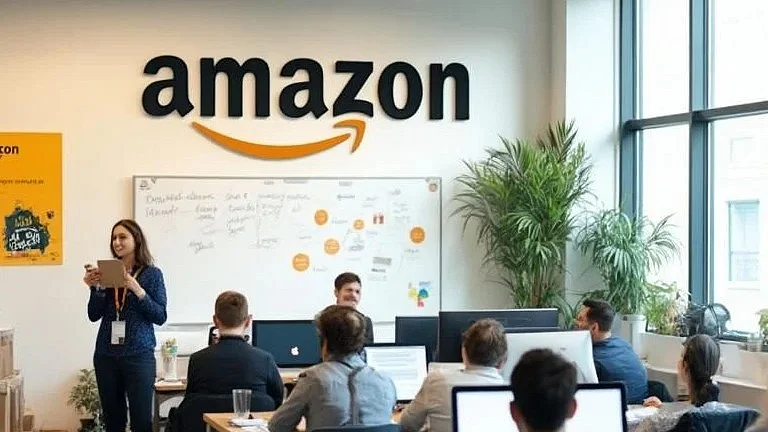
Amazon automation push could cut hiring need by ~160,000 through 2027
Robots, cobots and 75% automation targets aim to reshape fulfilment network
Projected $12.6bn savings 2025–27, lowering processing costs about $0.30/item
Risk of job cuts sparks political scrutiny, calls for retraining and protections
Internal Amazon documents indicate the e-commerce giant is preparing a far-reaching automation push that could substantially reduce future hiring needs in its US fulfilment network, NYT reported. This shift, if fully realised, could potentially reshape one of the country’s largest private workforces.
Amazon’s robotics and automation teams have told company leaders they can cut the need to add roughly 160,000 workers in the US by 2027 and could avoid hiring more than 600,000 roles by 2033 as facilities move to robot-heavy designs.
The plans include an aspiration to automate as much as 75% of certain fulfilment operations, deploy thousands of “cobots” and replicate highly automated warehouse layouts across dozens of sites.
What the Documents Say?
The internal analysis projects meaningful efficiency gains: automation could save about 30 cents per item processed and generate up to $12.6 billion in operational cost savings between 2025 and 2027.
Executives briefed the board on ambitions to roll automated designs similar to a high-robot facility in Shreveport, Louisiana, a prototype site where Amazon says robots reduced the workforce by roughly 25% compared with non-automated operations, across some 40 facilities by the end of 2027.
Company pushes Back
Amazon disputed portrayals of the documents as company policy, saying the materials reflected the views of a single team and not its overall hiring strategy.
Spokespeople pointed to planned seasonal hiring of about 250,000 workers for the upcoming holiday period and stressed that automation investments historically coincided with other job creation across delivery and operations. Senior operations executives have said automation savings are often redeployed into growth areas such as last-mile delivery and new depots.
Labour economists and critics warn the scale of the proposed automation could turn Amazon from a net creator into a net reducer of jobs, with spill-over effects for the logistics sector. “Nobody else has the same incentive as Amazon to find the way to automate,” said MIT economist Daron Acemoglu, who noted that once automation becomes profitable at scale it tends to diffuse widely, reshaping employment patterns beyond a single firm.
Kelly Nantel, Amazon spokesperson said, "Leaked documents often paint an incomplete and misleading picture of our plans, and that’s the case here. In our written narrative culture, thousands of documents circulate throughout the company at any given time, each with varying degrees of accuracy and timeliness. In this instance, the materials appear to reflect the perspective of just one team and don't represent our overall hiring strategy across our various operations business lines - now or moving forward. The facts speak for themselves: No company has created more jobs in America over the past decade than Amazon. We're actively hiring at operations facilities across the country and recently announced plans to fill 250,000 positions for the holiday season.”
How Amazon Frames the Change?
Within Amazon, proponents characterise the shift as efficiency and safety improvement, deploying “cobots” to augment human teams, speed fulfilment and lower costs that could otherwise raise prices.
Company documents and executives emphasise that local staffing outcomes will vary and that automation does not tell the whole story about net employment effects across the broader business ecosystem.
Amazon is now one of the largest private employers in the United States; any durable move to shrink labour needs would carry political and social consequences.
Local communities that have relied on warehouse employment for decades could see fewer opportunities, while policymakers and labour groups may press for new protections, retraining programs or regulatory scrutiny. Economists warn of possible ripple effects on wage dynamics and regional economies where Amazon is a major employer.

































